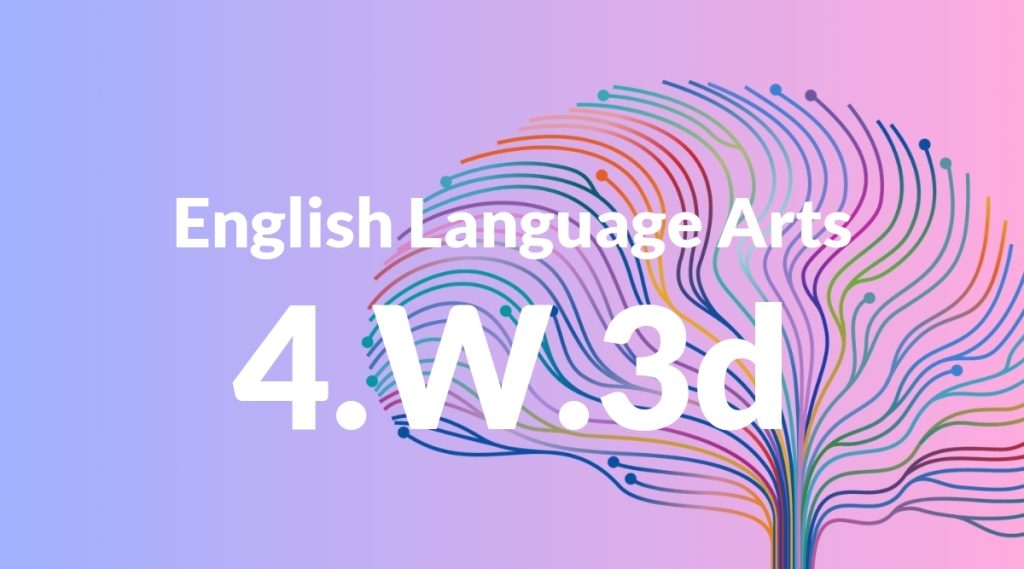Standard: 4.W.3d – Use concrete words and phrases and sensory details to convey experiences and events precisely.
Grade level: Grade 4
Subject: English Language Arts
Domain: Writing
Teacher Overview
This standard emphasizes the importance of using concrete words and sensory details to create vivid and precise descriptions in writing. It helps students enhance their narratives by making their experiences and events more engaging and relatable to the reader. Mastery of this standard is crucial as it lays the foundation for more advanced writing skills in later grades. Students should have a basic understanding of sentence structure, grammar, and the ability to write simple narratives. Familiarity with basic sensory words and phrases is also necessary.
After mastering this standard, students will be able to write more engaging and vivid narratives. They will develop skills in using descriptive language to enhance their storytelling and will be prepared to tackle more complex writing tasks that require detailed descriptions.
Common Misconception 1
Students may believe that using more adjectives automatically makes their writing more descriptive. This is incorrect because overloading a sentence with adjectives can make it cumbersome and less effective. Effective descriptive writing relies on the careful selection of concrete words and sensory details that add value to the narrative.
Intervention 1
Provide students with examples of effective descriptive writing and highlight the use of specific sensory details and concrete words. Conduct exercises where students practice writing descriptions with a focus on quality over quantity.
Common Misconception 2
Students might think that sensory details are only about the five senses and overlook emotions and feelings. This is incorrect because descriptive writing also involves conveying emotions and reactions to create a complete picture for the reader.
Intervention 2
Model how to incorporate emotional and experiential details into writing. Use mentor texts that effectively combine sensory details with emotions, and have students practice adding these elements to their own writing.
Prerequisite Knowledge
Students should have a basic understanding of sentence structure, grammar, and the ability to write simple narratives. They should also be familiar with basic sensory words and phrases.
Subsequent Knowledge
After mastering this standard, students will be able to write more engaging and vivid narratives. They will develop skills in using descriptive language to enhance their storytelling and will be prepared to tackle more complex writing tasks that require detailed descriptions.
Instructional Activities
- Descriptive paragraph writing exercises
- Sensory detail scavenger hunt
- Peer review sessions focused on descriptive language
- Writing prompts that emphasize sensory details
- Creating a sensory details chart




